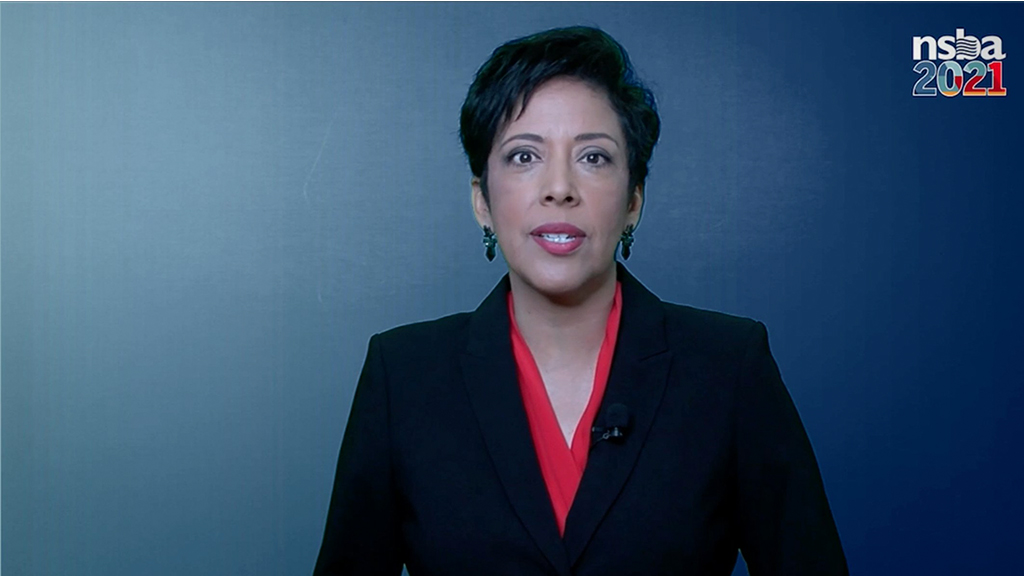
The coronavirus pandemic has been a “tidal wave-sized challenge” for the nation, and the full extent of the damage to the nation’s children remains unknown, NSBA Executive Director and CEO Anna Maria Chávez told attendees Saturday during the final general session of NSBA 2021.
NSBA is “fighting for resources to get through this tidal wave” while also “fighting for resources to repair the damage the tidal wave will leave behind,” Chávez said.
Instead of destroyed buildings and landscapes, “we’ll be confronted with learning loss, trauma, socio-emotional needs, and lives forever changed,” she said.
In Washington, D.C., NSBA is working to ensure that public schools get the funding and support they need to continue to innovate and transform so that each child can learn and flourish in a safe and secure environment, said Chávez.
In her conversation with President Biden’s transition team, now senior leaders at the U.S. Department of Education, and the new Education Secretary, Miguel Cardona, “I’ve stressed our priorities for public education, including $200 billion in dedicated K-12 education funding and $12 billion to permanently close the homework gap,” she said.
And as more schools return to in-person learning, “we must support the innovation that we’ve seen during the pandemic and the transformation that’s needed to bring public education into the future. A future that is more just and equitable and that serves each child.”
Chávez, who was hired to lead the 81-year-old organization last June, thanked the members of the NSBA federation—the state school boards associations—for cultivating school board excellence and serving as unifying voices and advocates for their states and local districts. She also thanked the nation’s school board members, 90,000 strong, for giving of their time and energy to serve and meet the needs of public school students and families in their local communities.
She challenged the participants of this year’s virtual gathering to reflect on everything they’ve had to do differently over this past year: What worked. What didn’t. And what they didn’t get a chance to try. That reflection is necessary because “to overcome the learning loss, the trauma, and other challenges our students are facing as a result of this COVID-19 tidal wave, it’s going to take that same innovative spirit that got us through this past year,” Chávez said.
“The 51 million students in our public schools are counting on us. I am confident that, together, we will not let them down.”

Share this content